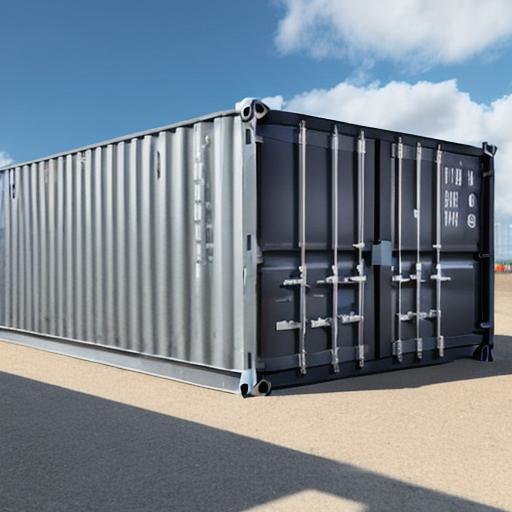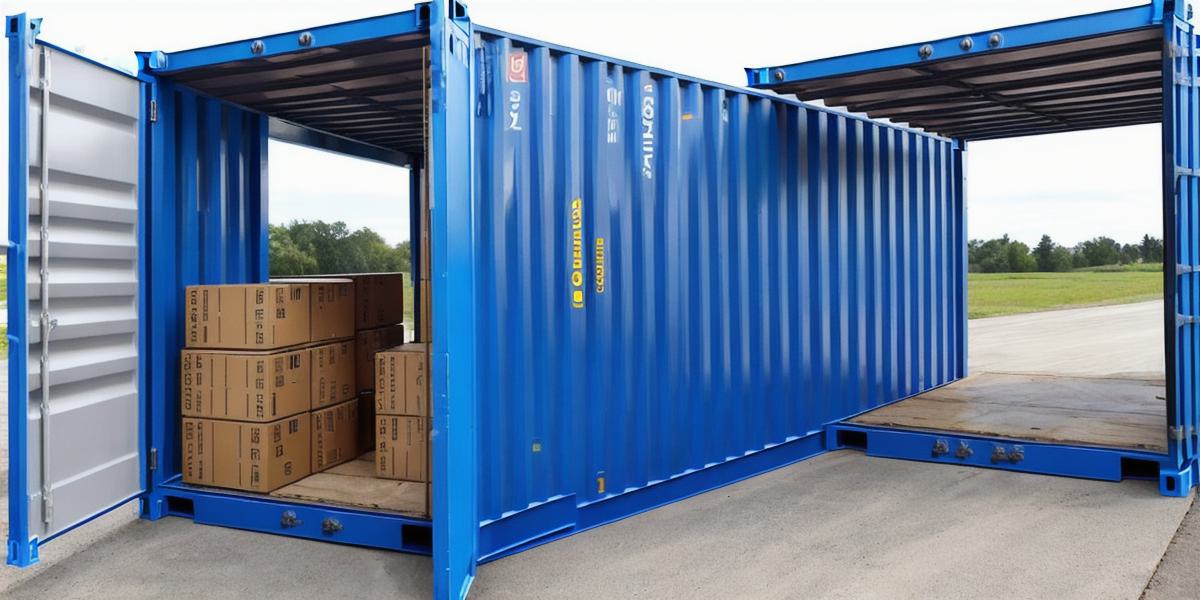Introduction
Shipping containers are a vital part of international trade, carrying goods across oceans and continents. However, loading and unloading these massive steel structures can be a daunting task, especially for those who have never done it before. In this article, we will provide you with tips and tricks on how to load and unload a shipping container safely and efficiently.
Understanding the Loading Process
Before loading a shipping container, it is essential to understand its weight and size. Shipping containers come in various sizes and can weigh up to 20 tons. Therefore, it is crucial to ensure that the container has enough space for your goods without overloading it.
To load a shipping container, you will need a forklift or a crane. The forklift is an excellent option if you only have a small amount of cargo, while a crane is ideal for heavy and bulky items. Once you have selected the appropriate equipment, follow these steps:
- Choose a suitable location for loading. It should be level, dry, and free from any obstacles that could hinder the loading process.
- Position the container so that the doors are facing the loading area.
- Use the forklift or crane to lift the goods onto the container. Make sure to distribute the weight evenly throughout the container to prevent damage to the cargo or the container itself.
- Secure the cargo using straps, ropes, or chains.
- Close and lock the container doors.
Unloading a Shipping Container
Unloading a shipping container involves reverse engineering the loading process. Follow these steps:
- Choose a suitable location for unloading. It should be level, dry, and free from any obstacles that could hinder the unloading process.
- Position the container so that the doors are facing the unloading area.
- Use the forklift or crane to lift the cargo from the container.
- Secure the cargo using straps, ropes, or chains.
- Transport the cargo to its final destination.
- Close and lock the container doors.
Tips for Loading and
Unloading a Shipping Container
Safely
- Wear appropriate personal protective equipment (PPE), such as gloves, safety shoes, and a hard hat, to prevent accidents.
- Always follow the manufacturer’s instructions when loading and unloading a shipping container.
- Use the correct equipment for the job to avoid damaging your cargo or the container.
- Ensure that the container is level and stable before loading or unloading it.
- Distribute the weight evenly throughout the container to prevent damage to the cargo or the container itself.
- Secure the cargo using appropriate straps, ropes, or chains.
- Close and lock the container doors properly to prevent theft or tampering.
Case Study: Freightline Carriers’ Success Story
Freightline Carriers is a leading provider of shipping services in North America. They have been providing safe and efficient shipping solutions for over 20 years, and their team of experts has valuable experience when it comes to loading and unloading shipping containers.
One of their clients was a food processing company that needed to ship perishable goods across the country. The company had never shipped by sea before and was worried about the safety and quality of its products during transit. Freightline Carriers worked closely with the client to design a customized shipping solution that included temperature-controlled containers and real-time monitoring systems to track the progress of the shipment.
As a result, the goods arrived safely at their destination, and the company was impressed with Freightline Carriers’ level of expertise and attention to detail. The client has since become one of Freightline Carriers’ largest customers and has recommended their services to other businesses in the food processing industry.
FAQs
Q: Can I load my shipping container without a forklift or crane?
A: Yes, you can load your shipping container using manual labor, but it will be much more difficult and time-consuming.
Q: How do I know if my shipping container is overloaded?
A: If the container’s doors won’t close properly, or if the container seems unstable when being lifted, it may be overloaded.
Q: Do I need to secure my cargo with straps or chains?
A: Yes, you should use appropriate straps, ropes, or chains to secure your cargo and prevent it from shifting during transit.

Summary
Loading and unloading a shipping container can be a challenging task, but with the right knowledge and equipment, it can be done safely and efficiently. Freightline Carriers has years of experience in providing customized shipping solutions for businesses of all sizes. If you need help with loading and unloading your shipping container, contact us today to learn more about our services.



